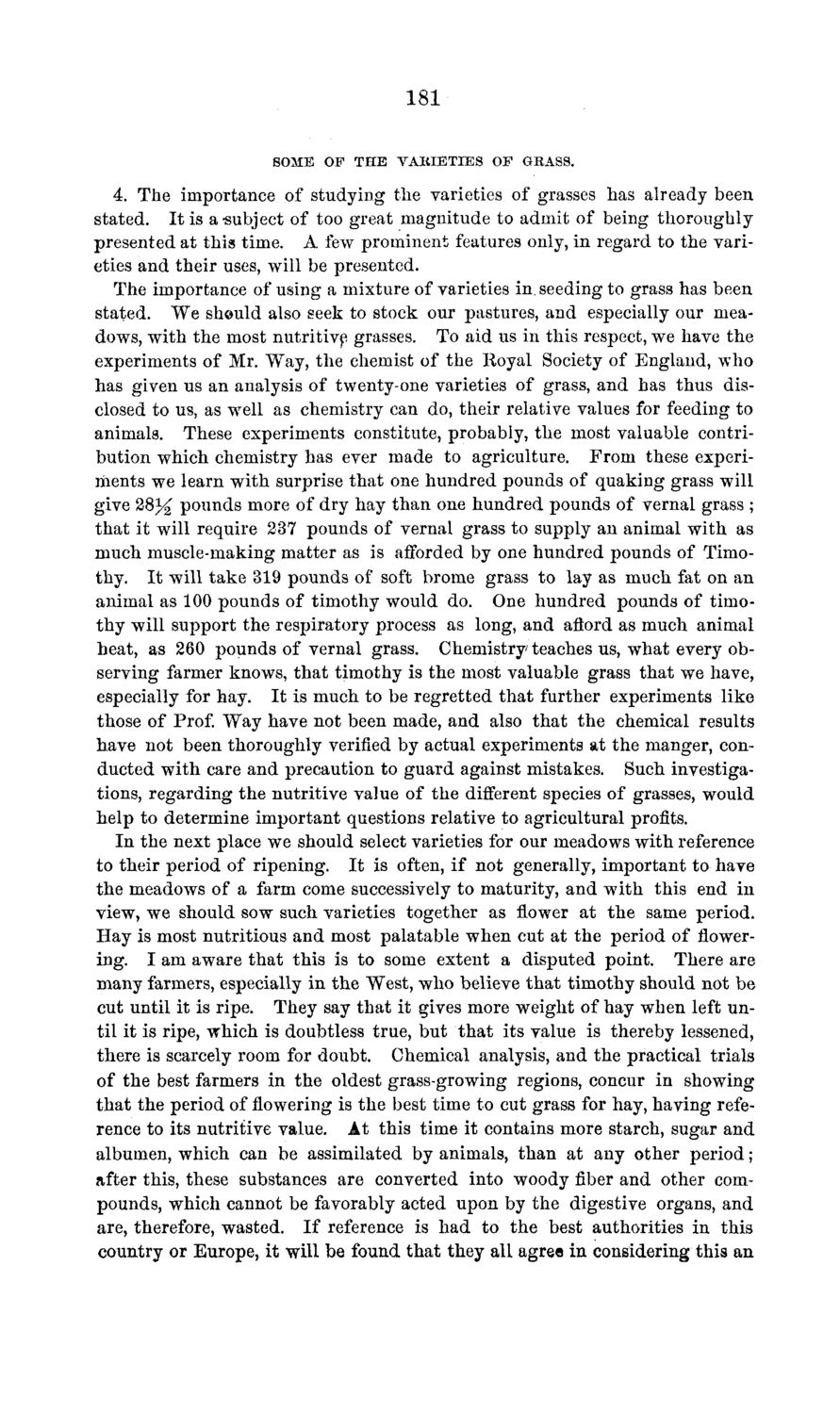| |
| |
Caption: Board of Trustees Minutes - 1869
This is a reduced-resolution page image for fast online browsing.

EXTRACTED TEXT FROM PAGE:
181 SOME O F T H E V A R I E T I E S O F GRASS. 4. The importance of studying the varieties of grasses has already been stated. It is a-subject of too great magnitude to admit of being thoroughly presented at this time. A few prominent features only, in regard to the varieties and their uses, will be presented. The importance of using a mixture of varieties in. seeding to grass has been stated. We sheuld also seek to stock our pastures, and especially our meadows, with the most nutritive grasses. To aid us in this respect, we have the experiments of Mr. Way, the chemist of the Royal Society of England, who has given us an analysis of twenty-one varieties of grass, and has thus disclosed to us, as well as chemistry can do, their relative values for feeding to animals. These experiments constitute, probably, the most valuable contribution which chemistry has ever made to agriculture. From these experiments we learn with surprise that one hundred pounds of quaking grass will give 2 8 ^ pounds more of dry hay than one hundred pounds of vernal grass ; that it will require 237 pounds of vernal grass to supply an animal with as much muscle-making matter as is afforded by one hundred pounds of Timothy. It will take 319 pounds of soft brome grass to lay as much fat on an animal as 100 pounds of timothy would do. One hundred pounds of timothy will support the respiratory process as long, and afford as much animal heat, as 260 pounds of vernal grass. Chemistry teaches us, what every observing farmer knows, that timothy is the most valuable grass that we have, especially for hay. It is much to be regretted that further experiments like those of Prof. Way have not been made, and also that the chemical results have not been thoroughly verified by actual experiments at the manger, conducted with care and precaution to guard against mistakes. Such investigations, regarding the nutritive value of the different species of grasses, would help to determine important questions relative to agricultural profits. In the next place we should select varieties for our meadows with reference to their period of ripening. It is often, if not generally, important to have the meadows of a farm come successively to maturity, and with this end in view, we should sow such varieties together as flower at the same period. Hay is most nutritious and most palatable when cut at the period of flowering. I am aware that this is to some extent a disputed point. There are many farmers, especially in the West, who believe that timothy should not be cut until it is ripe. They say that it gives more weight of hay when left until it is ripe, which is doubtless true, but that its value is thereby lessened, there is scarcely room for doubt. Chemical analysis, and the practical trials of the best farmers in the oldest grass-growing regions, concur in showing that the period of flowering is the best time to cut grass for hay, having reference to its nutritive value. At this time it contains more starch, sugar and albumen, which can be assimilated by animals, than at any other period; after this, these substances are converted into woody fiber and other compounds, which cannot be favorably acted upon by the digestive organs, and are, therefore, wasted. If reference is had to the best authorities in this country or Europe, it will be found that they all agree in considering this an
| |